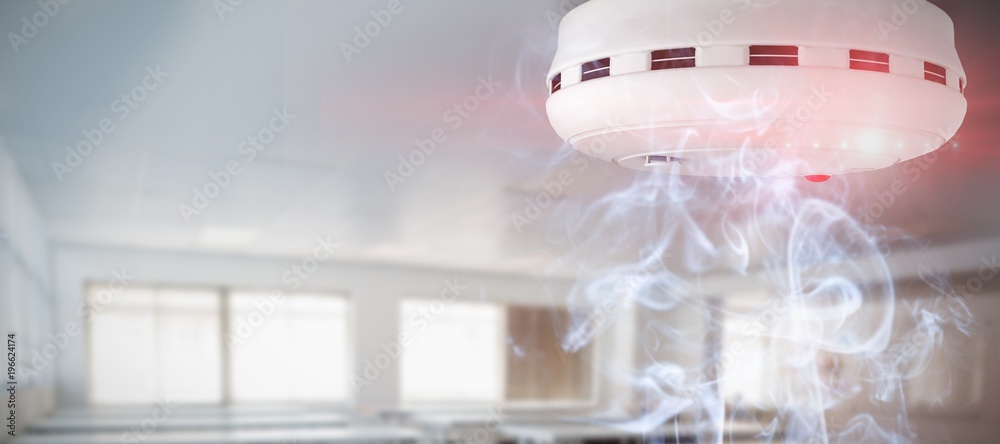Essential Guide to Fire Detection in Loft Conversions
loft conversion fire regulations
Fire safety is a critical aspect to consider when planning a loft conversion, as it involves following strict regulations and implementing effective fire detection systems to protect your home from unexpected fires. Key Takeaways:
- Loft conversions must adhere to fire safety regulations to ensure the highest standards of safety.
- Fire doors are required in loft conversions to provide a protected escape route.
- Smoke alarms should be installed in the loft conversion and interconnected with other alarms in the house.
- Using fire-resistant materials in the construction of a loft conversion is essential.
- Hiring an experienced contractor ensures expertise in fire safety guidelines and compliance with regulations.
- Avoid common fire safety mistakes in loft conversions by using proper fire detection equipment and following prevention measures.
- Fire safety certifications are necessary to ensure compliance with regulations.
- Educate yourself on fire safety in loft conversions to implement proper measures and choose suitable fire detection solutions.
- Implementing fire safety measures in your loft conversion is crucial for the safety of your home and its occupants.
Do I need fire doors on my loft conversion? – What do building regulations say?
A fire resistant door or FD30 fire door, often referred to as a “30-minute fire door,” is a specialized door designed to resist the spread of fire for a specified period, which, in this case, is 30 minutes. These fire doors are constructed with materials and components that provide a level of fire protection to help contain flames and smoke, allowing occupants of a building more time to escape safely in the event of a fire.
Key features of an FD30 fire door typically include:
- Fire-Resistant Core: The core of an FD30 door is made from materials that have been tested and certified to withstand fire for at least 30 minutes. Common core materials include fire-resistant timber, mineral wool, or composite materials.
- Intumescent Seals: FD30 doors are equipped with intumescent seals that expand when exposed to heat, effectively sealing the gaps between the door and the door frame. This helps prevent the passage of smoke and flames.
- Reinforced Construction: These doors are built with reinforced components, such as fire-rated hinges and door closers, to ensure they can withstand the stress of a fire.
- Certification: FD30 fire doors are rigorously tested to meet industry standards and regulations. They should bear certification marks and labels to indicate compliance with fire safety requirements.
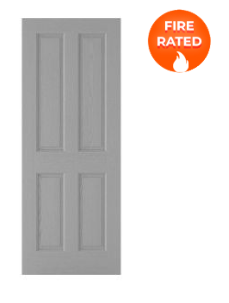
FD30 fire doors are commonly used in various types of buildings to compartmentalize fire hazards and enhance overall fire safety.
They are typically installed in areas where a 30-minute fire resistance rating is required by building regulations and allow you to get safely from the loft to the outside.
Proper installation, maintenance, and periodic inspections of FD30 fire doors are crucial to ensure they remain effective in the event of a fire.
Some Loft conversion projects require fire doors and others do not, this is dependent on the type of loft extension you are doing.
I’ve listed different property types below and added an explanation regarding fire doors for each of these.
Schedule a conversation with me
Bungalows: (single storey)
You do not require Fire doors in a bungalow loft conversion, this is because the new loft conversion is at the first-floor level and there is no requirement regarding fire safety to install fire doors.
2 Storey houses: (detached & semi-detached)
In this situation, a loft conversion to this type of house would be on the second floor and therefore Building regulations require that you provide a safe escape route to a safe place. An FD30 door is a fire-resistant door that provides 30 minutes of fire resistance.
Which rooms require fire doors?
Regulations stipulate that there must be fire doors fitted to all rooms except bathrooms and cupboards, however, if the cupboard contains a boiler then the cupboard will require a fire door to be fitted.
Flats and Maisonettes:
Flats and maisonettes also require their doors to be replaced with fire doors (protection against fire). external doors are not required to be fire doors.
A loft conversion requires a fire-protected route through the stairway without passing through any rooms. Building regulations stipulate that the doors along this route, from the loft conversion itself to the exit, must provide 30 minutes of fire resistance, often referred to as FD30 on architectural drawings.
Wedged-open fire doors
Wedged open fire doors is a common practice for convenience but can have insurance implications.
By compromising fire compartmentation and increasing the risk of fire-related losses, it violates safety regulations and loss prevention measures. In the event of a fire claim, insurance policies may be voided due to perceived negligence, leaving policyholders responsible for all damages.
Something to think about!
Can existing doors be upgraded to fire doors? – fire safety measures
Upgrading Existing Doors to Meet UK Building Regulations
Where existing doors need to be upgraded you may consider upgrading standard doors into fire doors.
Companies like Envirograf & Passive Fire Products offer innovative door upgrading solutions along with technical expertise, providing an effective means to meet Building Control requirements.
This approach often proves to be a cost-effective alternative to complete door replacement.
Door upgrade kits are versatile and designed to cater to a variety of wooden doors, irrespective of their style, be it flat panels, raised and fielded edges, or ledged and braced doors.
Each kit includes ample primer, intumescent paint, panel card, and sealing top coat, sufficient to fireproof four-door sides. These coatings can be applied over existing paint or varnish with minimal preparation, and are available in clear or white versions.
Regardless of whether the existing doors have been coated previously or not, they can be upgraded to provide 30 minutes of fire resistance (FD30). Upon application, they furnish you with a certificate of supply signed by the applicator, which is recognized by Building Control as evidence that the upgraded door complies with the required fire resistance standards tested to BS 476 Part 22.
| Requirement | Specification |
|---|---|
| Fire door rating | Minimum of thirty minutes |
| Location of fire door | Doors off the protected area |
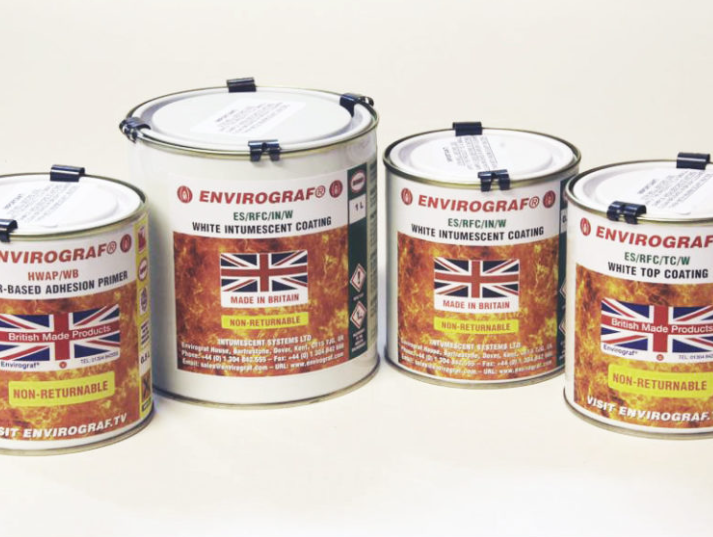
Smoke alarms & smoke detectors in Loft Conversions
In Scotland, there’s been a recent change in the law – since February 1, 2022, every home must have interlinked fire alarms. What this means is that if one alarm sounds, they all do.
This is crucial because you may not always hear the alarm closest to the fire, especially if you’re in another part of the house. Having an interlinked system can make all the difference and potentially save lives.
It’s your responsibility to ensure your home meets this new fire alarm standard as soon as possible.
Here’s what you need to do: You must have one smoke alarm in the room where you spend most of your day, typically the living room, one smoke alarm in every circulation space on each floor (hallways and landings), and one heat alarm in the kitchen. All smoke and heat alarms should be mounted on the ceiling and interlinked so that if one goes off all of them go off.
If you have carbon-fueled appliances like boilers, fires, or flues, you’ll also need a carbon monoxide detector, although it doesn’t need to be linked to the other alarms.
Smoke alarms in loft conversions:
For instance, if you live in a 3-bedroom, 2-storey house, you’ll need:
- Three smoke alarms
- One heat alarm, and
- Possibly carbon monoxide alarms.
The key is to ensure they are interlinked. There are two types of interlinked fire alarms that meet the new rules: sealed battery alarms, which are tamper-proof and have long-life batteries, and mains-wired alarms, which are cheaper but should be installed by a qualified electrician. Both types are interlinked by radio frequency, so no WiFi is needed.
Regarding your home insurance, it’s unlikely that an existing policy will be affected by these changes, but it’s always a good idea to check with your insurance company about the specifics of your policy.
To ensure comprehensive fire detection in your loft conversion, it is imperative to install smoke alarms that meet the loft conversion fire detection regulations and provide adequate coverage for the entire property. According to the building regulations, at least one smoke alarm must be fitted on each storey of your home, and a loft conversion that is transformed into a habitable room is considered the top storey of the property.
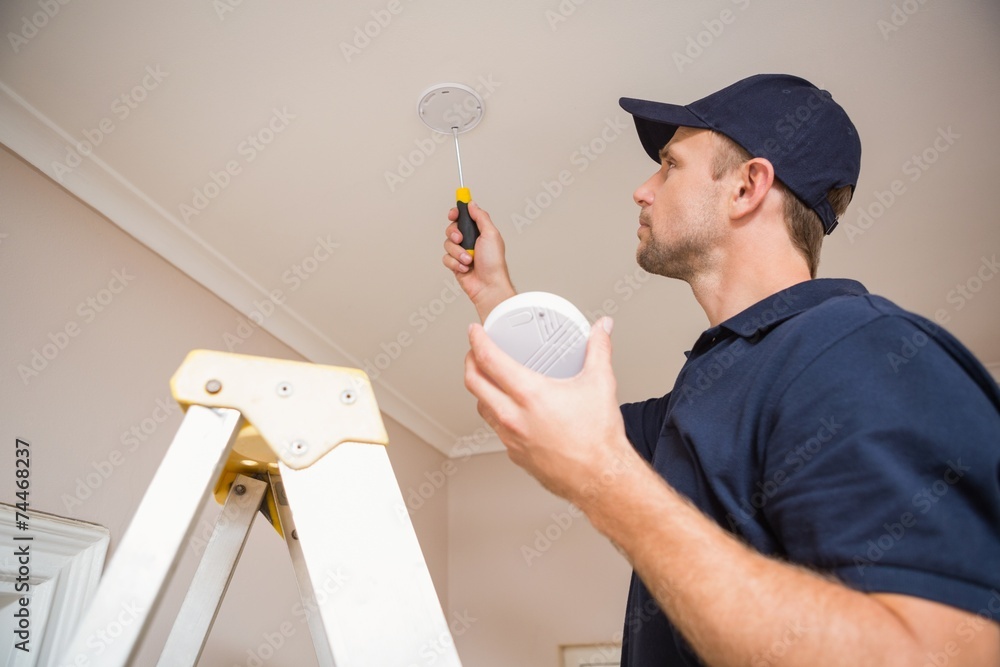
Schedule a conversation with me
Fire Suppression Systems in Loft Conversions
As part of the building regulations, a fire suppression system may be required when converting the loft.
Houses don’t generally require a fire suppression system however most flats and maisonettes do.
Flats with a storey above 4.5m generally require a fire suppression system to be installed.
We have designed lots of different loft conversions and can give you specific advice on this.
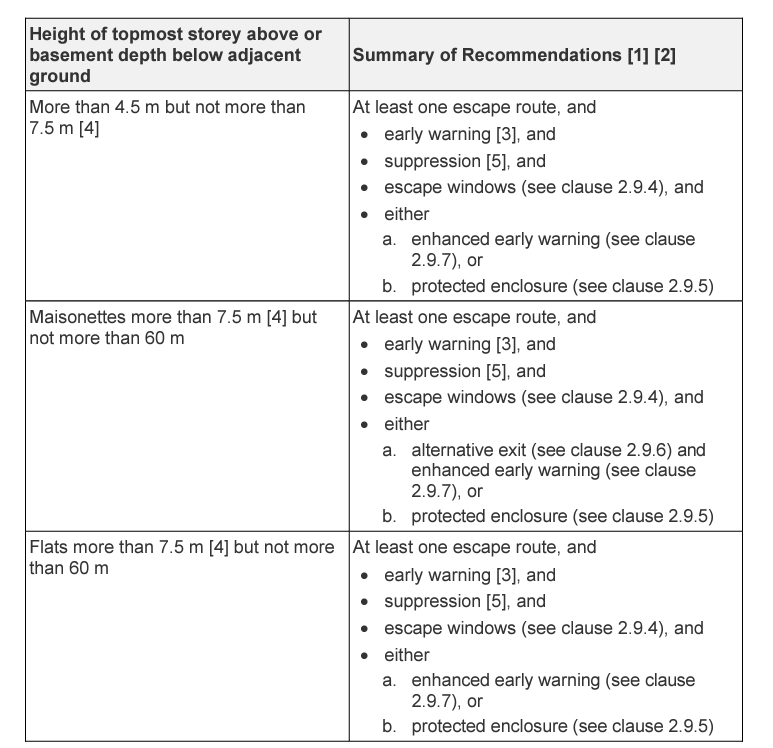
A sprinkler system and a mist system are both types of fire suppression systems, but they operate differently and have distinct characteristics. Here’s how they differ:
Sprinkler System
- Water Volume: Sprinkler systems release a substantial amount of water to control and extinguish fires, which can sometimes result in water damage.
- Droplet Size: The water droplets released by sprinkler systems are larger, which helps in cooling the surrounding area quickly but may not be as effective in penetrating into smaller spaces.
- Activation: Sprinklers are typically activated by heat-sensitive elements, which release water when a certain temperature is reached.
- Installation: Sprinkler systems are generally installed in ceilings and are part of a network of pipes that are either always filled with water (wet system) or air (dry system).
- Application: These systems are commonly used in residential buildings, commercial spaces, and industrial settings.
Mist System
- Water Volume: Mist systems use significantly less water compared to sprinkler systems. They release a fine mist of water droplets, minimizing water damage.
- Droplet Size: The water droplets in a mist system are much finer, allowing them to more effectively suppress fires by reaching into smaller spaces and providing better coverage.
- Activation: Like sprinkler systems, mist systems are also activated by heat-sensitive elements, but they may offer more advanced detection options.
- Installation: Mist systems can be installed in various locations, including walls and ceilings, and can be integrated into existing water supply systems.
- Application: Mist systems are suitable for a wide range of settings, including residential, commercial, and heritage buildings, where water damage is a significant concern.

Conclusion
While both systems are designed to suppress fires, mist systems offer the advantage of using less water and potentially causing less water damage, making them a more suitable option for protecting valuable assets and sensitive environments. On the other hand, sprinkler systems are a tried-and-tested solution that provides reliable fire protection in a variety of settings. The choice between the two would depend on the specific requirements of the building and the nature of the potential fire hazards present.
That being said we generally always opt for a mist system, which is likely to cost around £6000.00 + VAT
Additional Fire Safety Measures
In addition to smoke alarms, there are other fire safety measures that should be considered in your loft conversion. These include:
- Fire-resistant doors: All interior doors facing the designated escape route from the loft conversion must be fire-resistant, with a minimum rating of 20 minutes. These fire doors should be certified by the Woodworking Federation BWF-Certifire scheme to ensure they meet the necessary standards.
- Fire containment: Walls separating your property from neighboring properties should be fire-resistant to limit the spread of fire. Consider using fire-resistant curtains and installing fire extinguishers in visible and easily accessible places, including inside the loft space.
- Escape routes: Ensure that there is a protected escape route from your loft conversion to an outside door. This may involve installing fire-rated plasterboard along the escape route, as well as providing a window escape option with a wide opening and fire-resistant glass.
By adhering to the loft conversion fire detection regulations and implementing proper fire safety measures, you can ensure the safety of your loft conversion and protect yourself and your property from the risk of fire.
| Key Points: |
|---|
| Install smoke alarms that meet loft conversion fire detection regulations and provide adequate coverage. |
| Position smoke alarms strategically in circulation spaces. |
| Choose mains-operated alarms with a working battery backup system. |
| Use fire-resistant doors and consider fire containment measures. |
| Ensure there is a protected escape route from the loft conversion. |
Does my loft conversion need to be constructed from specialist fire-resistant materials?
When converting your loft, it is crucial to prioritize fire safety by constructing the conversion with specialist fire-resistant materials that comply with building regulations.
The building regulations have specific requirements for fire safety in loft conversions, and using fire-resistant materials is an essential part of meeting these regulations.
“All beams, and separating walls, must be fire resistant for at least thirty minutes. Plasterboard must be fire-rated, and exposed steel beams must be finished with flame-resistant paint. or 15mm fireline plasterboard (PINK).
These regulations aim to delay the spread of fire and provide additional time for occupants to escape the building safely. Fire-resistant materials can withstand the intense heat of a fire for a specified period, creating a barrier that prevents the fire from spreading quickly through the loft conversion.
By using fire-resistant materials in your loft conversion, you can ensure that the structure can withstand the heat and flames in the event of a fire, giving you valuable time to evacuate and reducing the risk of extensive damage to the property.
Prioritizing fire safety in your loft conversion will provide peace of mind and protect both you and your property.

Stack of Plasterboard Fire Resistant gypsum. Drywall board cardboard surface Panel Type DF for indoor concrete walls prepared for construction
Benefits of Hiring a Professional Loft Conversion Company
Opting for a reputable contractor who is experienced in loft conversions is a smart choice,
These companies have a wealth of experience in delivering loft conversions that meet the highest standards of safety. Here are some key benefits of hiring a professional loft conversion company:
- Expertise in Fire Safety Guidelines: Professional loft conversion companies are well-versed in the fire safety guidelines for loft conversions. They understand the specific regulations and requirements that need to be followed, ensuring that all necessary fire safety measures are implemented. This includes the installation of fire doors, smoke alarms, and other fire detection systems.
- Compliance with Fire Regulations: Fire safety regulations for loft conversions are stringent, and it can be challenging for homeowners to navigate through them. By hiring a professional company, you can have peace of mind knowing that they will comply with all the necessary fire regulations. They will ensure that the loft conversion is constructed with fire-resistant materials and that all necessary fire safety measures are in place.
- Proper Fire Detection Systems: Fire detection systems are essential in loft conversions to ensure early detection of fires. Professional loft conversion companies have the expertise to design and install effective fire detection systems. They can recommend the best smoke alarms, interconnected systems, and other fire detection equipment to provide optimal safety.
- Quality Workmanship: Hiring a professional loft conversion company ensures that the construction and installation of fire safety measures are carried out to the highest standards. They have a team of skilled professionals who are experienced in loft conversions and understand the importance of proper fire safety. This ensures that the loft conversion is not only aesthetically pleasing but also built with safety as the top priority.
By choosing a reputable loft conversion company that prioritizes fire safety, you can have confidence that your loft conversion will meet all the necessary requirements and provide a safe living space. Their expertise, compliance with fire regulations, and focus on fire detection systems will help ensure the highest level of fire safety in your loft conversion.
Summary
Opting for a reputable loft conversion company that specializes in fire safety is a smart choice, as it ensures expert guidance on fire detection systems, compliance with loft conversion fire regulations, and overall loft conversion fire safety. These companies have the knowledge and experience to navigate through the fire safety guidelines, comply with regulations, install proper fire detection systems, and deliver high-quality workmanship. Hiring a professional loft conversion company provides peace of mind and assurance that your loft conversion is safe and meets all the necessary fire safety standards.
| Benefits of Hiring a Professional Loft Conversion Company |
|---|
| Expertise in Fire Safety Guidelines |
| Compliance with Fire Regulations |
| Proper Fire Detection Systems |
| Quality Workmanship |
Common Fire Safety Mistakes to Avoid in Loft Conversions
It’s crucial to be aware of common fire safety mistakes that can compromise the safety of your loft conversion and take necessary precautions to avoid them, including the use of appropriate fire detection equipment and adherence to fire prevention measures. By learning from these mistakes and implementing the right safety measures, you can ensure the protection of your property and the well-being of your loved ones.
1. Neglecting the Installation of Fire Doors
One of the most common mistakes in loft conversions is neglecting the installation of fire doors. Fire doors are essential for creating a protected escape route and preventing the spread of fire. It is crucial to replace existing doors with fire-resistant doors that meet the necessary fire safety standards. These doors should be self-closing and have intumescent strips to seal gaps in case of a fire. By installing fire doors, you can enhance the safety of your loft conversion and ensure a secure escape route.
2. Failure to Install Smoke Alarms
Another common mistake is the failure to install smoke alarms in the loft conversion. Smoke alarms are crucial for early detection of fire and can provide valuable time to escape. It is essential to install smoke alarms on each storey of your property, including the loft conversion. The alarms should be interconnected and connected to the mains for optimal efficiency. Regularly test and maintain the smoke alarms to ensure their proper functioning.
3. Using Non-Fire-Resistant Materials
Using non-fire-resistant materials in the construction of your loft conversion is another mistake that can compromise its safety.
Fire-rated plasterboard should be used, and exposed steel beams and interior timber beams should be finished with fire-resistant coatings. By using the right materials, you can enhance the fire safety of your loft conversion.
4. Lack of Fire Safety Education
A lack of fire safety education is another common mistake that homeowners make in loft conversions. It is essential to educate yourself and your family members about fire prevention measures, escape routes, and emergency procedures. Ensure everyone knows how to operate fire detection equipment and extinguishers, and establish a fire safety plan that includes regular drills. By educating yourself and your family, you can minimize the risk of fire incidents and ensure a safer living environment in your loft conversion.
Schedule a conversation with me
Summary
When it comes to fire safety in loft conversions, it’s crucial to be aware of common mistakes and take necessary precautions to avoid them. Install fire doors, and smoke alarms, and use fire-resistant materials in the construction of your loft conversion. Educate yourself and your family members about fire safety measures and establish an emergency plan. By addressing these key fire safety considerations, you can ensure the safety and well-being of your loft conversion.
| Common Fire Safety Mistakes in Loft Conversions | Prevention Measures |
|---|---|
| Neglecting the installation of fire doors | Install fire-resistant doors that meet safety standards |
| Failure to install smoke alarms | Install interconnected smoke alarms on each storey |
| Using non-fire-resistant materials | Use fire-resistant materials for construction |
| Lack of fire safety education | Educate yourself and family members about fire safety measures |
Fire Safety Inspections and Certifications for Loft Conversions
To ensure your loft conversion meets the necessary fire safety regulations, it is essential to obtain the required certifications, including proper fire detection systems and compliance with loft conversion fire detection requirements.
The building standards officer will inspect the property before a completion certificate is issued
Fire safety is a critical aspect of any loft conversion project, as it ensures the safety of the occupants and protects the property from the risk of fire. By adhering to fire safety regulations, you can create a safe living space that meets all necessary standards.
Obtaining the necessary certifications is also crucial to demonstrate compliance with fire safety regulations. These certifications serve as proof that your loft conversion has been inspected and meets the required standards. It is important to keep these certifications on file and readily available for future reference.
Benefits of Fire Safety Inspections and Certifications
By obtaining the required certifications, you can enjoy several benefits:
- Peace of mind knowing that your loft conversion meets the necessary fire safety standards
- Reduced risk of fire and improved safety for occupants
- Compliance with building regulations and legal requirements
- Potential discounts on insurance premiums
- Protection of your property investment
Fire safety should be a top priority when conducting a loft conversion. By ensuring thorough fire safety inspections and obtaining the necessary certifications, you can create a safe and compliant living space that provides peace of mind for you and your family.
Remember, fire safety is not something to be taken lightly. Invest in the necessary inspections and certifications to protect yourself, your loved ones, and your property.

Building inspection, asian contractor young man, male inspecting home, reconstructed construction, renovation or check defect, before finish handing it over to client, customer. Engineering worker.
Summary
Fire safety certifications are essential for loft conversions to ensure compliance with fire safety regulations. These inspections assess various aspects, including construction materials, fire-resistant doors, and presence of smoke alarms. Certifications serve as proof of compliance and provide peace of mind, reducing the risk of fire and protecting your property investment.
Certificates of installation are required for fire detection and fire suppression systems.
Educating Yourself on Fire Safety in Loft Conversions
Taking the initiative to educate yourself on fire safety in loft conversions is crucial in ensuring the safety of your home and loved ones. By following practical tips, and guidelines, and exploring fire detection solutions tailored for loft environments, you can minimize the risk of fire and create a safe living space. Here are some key points to consider:
1. Understand the Building Regulations
The first step in educating yourself on fire safety in loft conversions is to familiarize yourself with the building regulations. These regulations outline the specific requirements for fire safety in loft conversions, including the installation of fire doors, smoke alarms, and fire-resistant materials. By understanding these regulations, you can ensure that your loft conversion meets the necessary safety standards.
2. Install Fire Doors and Smoke Alarms
Fire doors are an essential component of fire safety in loft conversions. They provide a protected escape route and can help contain the spread of fire. Make sure to install fire-resistant doors in accordance with the building regulations. Additionally, smoke alarms should be installed on each floor, including the loft conversion. These alarms should be interconnected and wired to the mains for optimal safety.
3. Choose Fire-Resistant Materials
When selecting materials for your loft conversion, opt for fire-resistant options. Fire-resistant materials, such as fire-rated plasterboard and flame-resistant paint, can provide added protection against the spread of fire. Ensure that floors, beams, walls, and timber beams are constructed using fire-resistant materials to meet the necessary safety standards.
4. Take Fire Safety Precautions
In addition to installing fire doors, smoke alarms, and using fire-resistant materials, there are other fire safety precautions you can take in your loft conversion. These include keeping escape routes clear of obstructions, avoiding overloading electrical circuits, and using fire extinguishers or blankets for small fires. Regularly test your smoke alarms and conduct fire drills to ensure that everyone in the household is aware of the escape routes and safety procedures.
| Key Points: | – Familiarize yourself with the building regulations for loft conversions – Install fire doors and interconnected smoke alarms – Use fire-resistant materials in construction – Take additional fire safety precautions |
|---|
By educating yourself on fire safety in loft conversions and implementing the necessary precautions, you can create a safe and secure living space for you and your family. Remember, fire safety should always be a top priority when undertaking any home improvement project.
Schedule a conversation with me
Ensuring Fire Safety in Your Loft Conversion
Prioritizing fire safety in your loft conversion is of utmost importance. By implementing the necessary fire alarms, fire detection systems, and adhering to fire safety guidelines, you can ensure a safe and secure living environment in your converted loft.
When it comes to fire safety in your loft conversion, there are several key measures that need to be taken. Firstly, it is essential to install fire-resistant doors throughout the escape route. These doors need to provide at least thirty minutes fire resistance and should be placed above or below the stairs depending on their location.
In addition to fire doors, it is crucial to have smoke alarms installed in your loft conversion. These can often be the first line of defence.
According to regulations, there should be at least one smoke alarm on each storey of your home, including the loft conversion. These alarms must be interconnected and wired to the mains for effective communication between devices.
It is also important to be aware of common fire safety mistakes and take steps to avoid them. Using proper fire detection equipment, following fire prevention measures, and regularly maintaining and inspecting your loft conversion can help prevent potential fire hazards.
Fire safety certifications are necessary to ensure compliance with fire regulations. These inspections verify that your fire detection systems meet the required standards and provide you with the necessary certifications to demonstrate your loft conversion’s fire safety.
Educating yourself on fire safety in loft conversions is crucial. By familiarizing yourself with fire safety guidelines, tips, and available fire detection solutions specifically designed for lofts, you can take proactive measures to prevent fire accidents.
In conclusion, ensuring fire safety in your loft conversion is essential for the well-being of you and your family. By implementing the necessary fire safety measures, hiring professionals, and staying educated on fire safety guidelines, you can create a secure living space in your converted loft.
FAQ
Q: What are the fire regulations for loft conversions?
A: Fire regulations for loft conversions require the installation of fire-resistant doors, smoke alarms, and fire-resistant materials in the construction of the loft. The doors in the escape route must be fire resistant for at least 30 minutes, and at least one smoke alarm must be fitted on each floor of the property, including the loft. The loft conversion must also have a protected escape route with passive fire protection. It is important to consult the building regulations and work with a reputable loft conversion company to ensure compliance and safety.
Q: Do I need to install a fire door in my loft conversion?
A: Yes, a fire door is required in a loft conversion to provide a protected escape route in case of fire. The fire door should be placed either above or below the stairs, depending on their location. The door must be fire-resistant for at least 30 minutes. It is important to follow the fire door regulations and consult with a professional loft conversion company to ensure proper installation and compliance.
Q: Do I need a smoke alarm in my loft conversion?
A: Yes, a smoke alarm is a mandatory requirement for a loft conversion. The building regulations state that at least one smoke alarm should be fitted on each floor of the property, including the loft. The smoke alarms should be interconnected and wired to the mains for complete communication between the devices. It is important to choose smoke alarms that are suitable for loft conversions and comply with the necessary regulations.
Q: Do I need to use specialist fire-resistant materials in my loft conversion?
A: Yes, it is important to use specialist fire-resistant materials in the construction of a loft conversion to ensure safety and compliance with fire regulations. The floors, beams, walls, and plasterboard should be fire resistant for at least 30 minutes. Exposed steel beams should be finished with flame-resistant paint, and interior timber beams should be finished with a fire-resistant coating. Working with a reputable loft conversion company will ensure that the necessary fire-resistant materials are used in the construction process.
Q: Should I hire a professional loft conversion company for fire safety?
A: Yes, hiring a professional loft conversion company is highly recommended for fire safety in a loft conversion. They have the expertise and experience to design and construct a loft conversion that complies with fire regulations and ensures proper fire detection systems. They will also provide guidance and advice on fire safety measures and can help with obtaining the necessary certifications. Working with professionals will give you peace of mind and ensure the safety of your loft conversion.
Q: What are some common fire safety mistakes to avoid in loft conversions?
A: Some common fire safety mistakes to avoid in loft conversions include not installing fire-resistant doors, neglecting to have smoke alarms on each floor, using non-fire-resistant materials, and not following the necessary building regulations. It is important to consult with a professional loft conversion company, educate yourself on fire safety guidelines, and ensure that all fire safety measures are in place before and during the construction of the loft conversion. Taking proper precautions will help prevent fire accidents and ensure the safety of occupants.
Q: What are the fire safety inspections and certifications needed for a loft conversion?
A: Fire safety inspections are an important part of the loft conversion process to ensure compliance with fire regulations. Inspections will assess the fire safety measures in place, including fire doors, smoke alarms, and fire-resistant materials. Certifications will be issued upon successful completion of the inspections, confirming that the loft conversion meets the necessary fire safety requirements. It is important to work with a reputable loft conversion company that can assist with the inspections and certifications to ensure compliance and safety.
Q: How can I educate myself on fire safety in loft conversions?
A: Educating yourself on fire safety in loft conversions can be done through research, reading fire safety guidelines, and consulting with professionals in the field. It is important to familiarize yourself with the building regulations and fire safety requirements specific to loft conversions. Attending fire safety workshops or seminars can also be helpful in gaining knowledge on fire prevention and detection in loft conversions. By educating yourself, you can make informed decisions and ensure the proper implementation of fire safety measures in your loft conversion.
Q: How can I ensure fire safety in my loft conversion?
A: To ensure fire safety in your loft conversion, it is important to follow the necessary fire regulations, use fire-resistant materials, install fire doors and smoke alarms, and have proper fire detection systems in place. Consulting with a professional loft conversion company will ensure that all fire safety measures are properly implemented and comply with the building regulations. Regular inspections and maintenance of fire safety equipment, as well as educating yourself on fire safety guidelines, will help maintain a safe environment in your loft conversion.

